Kulturlabbet
Using Service Design methods to help the organization reach out to more people within their target group.
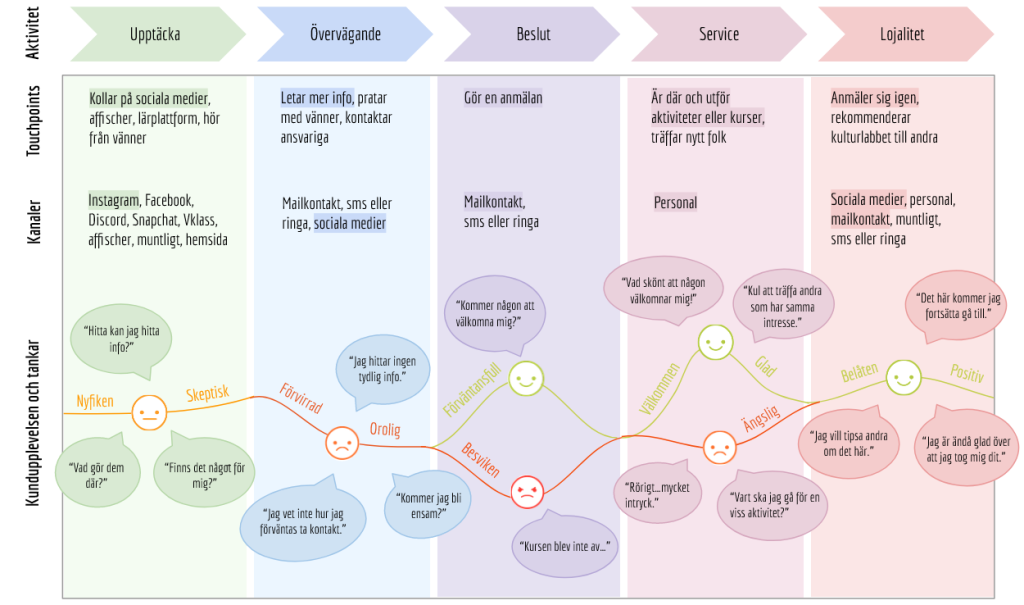
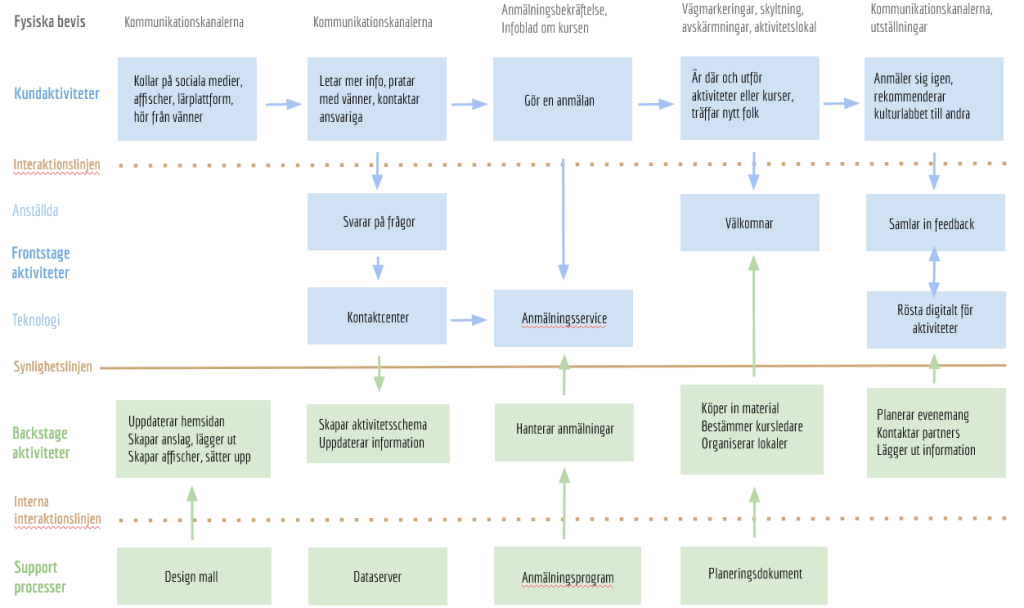
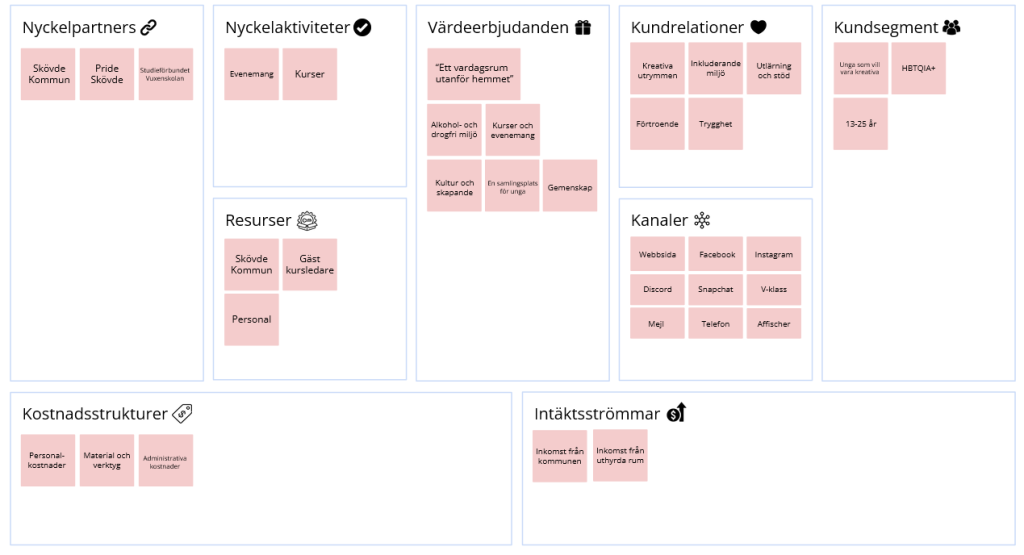
Overview of the project
Kulturlabbet is a cultural center that is opened to young people from the age 13 to 25. This is a place where there are endless opportunities to be creative, meet others and just hangout. The assignment originated within Kulturlabbet and their desire for a clearer communication and how to reach out to the target group. The bigger picture that we got from their desire was that culture is very important, and that they want to get more people involved in culture, but also make Kulturlabbet more relevant.
For this project and research we were 5 people working on it, where me and another group member alternated in taking the project leading position.
Tools/programmes used in this project
- Procreate
- PowerPoint
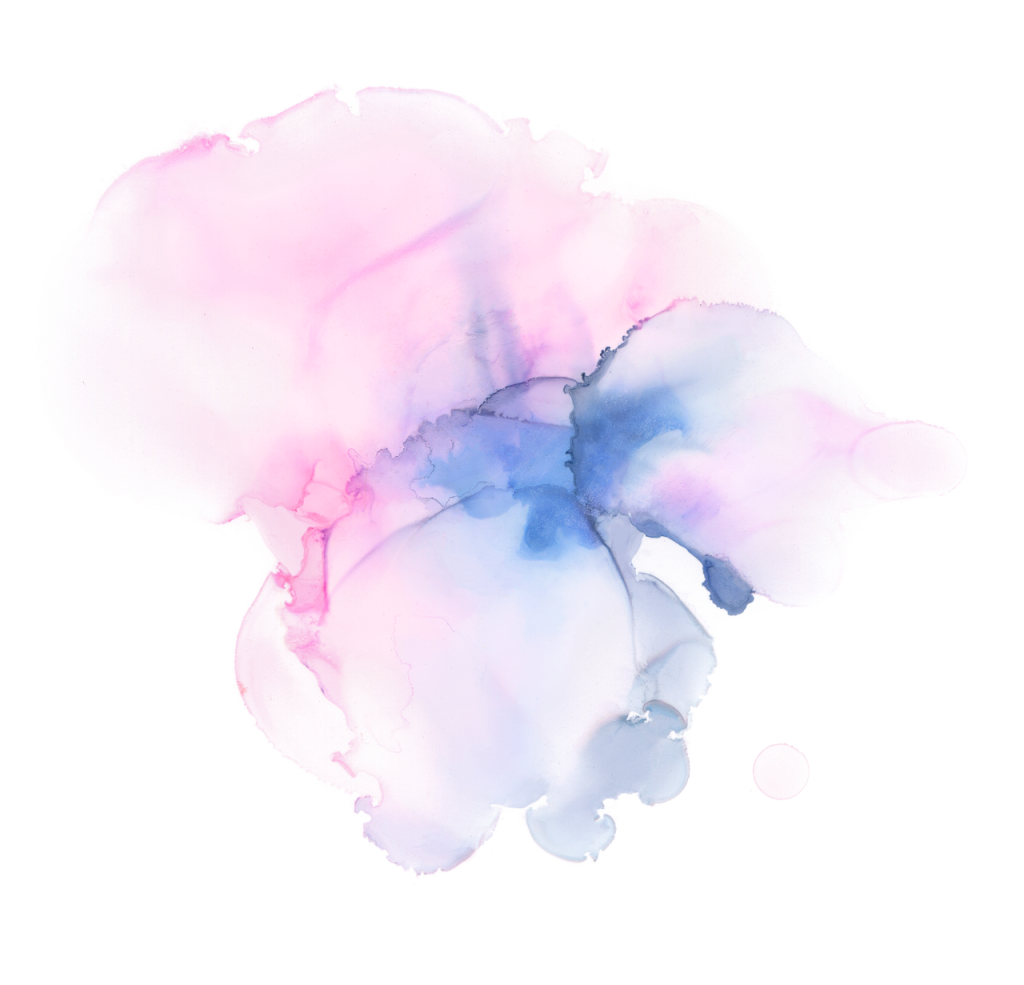
User research
Since there is a huge difference between the age 13 to 25 in their target group, Kulturlabbet expressed that it was harder to bring the older demographic. One of the aspects in this project was to try to find other ways to make Kulturlabbet more attractive for 18-25 year olds.
In order to get a better understanding of the users we conducted informal interviews. Each group member interviewed 1-2 people each. Based off the interviews we then created personas that would represent different users in their target group.
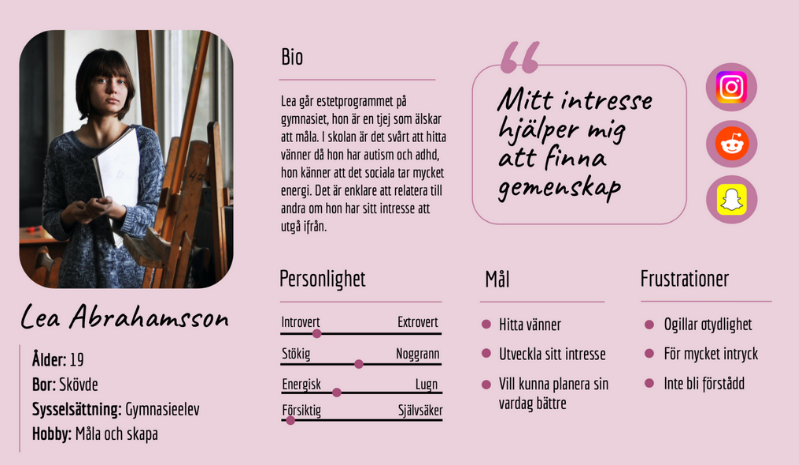
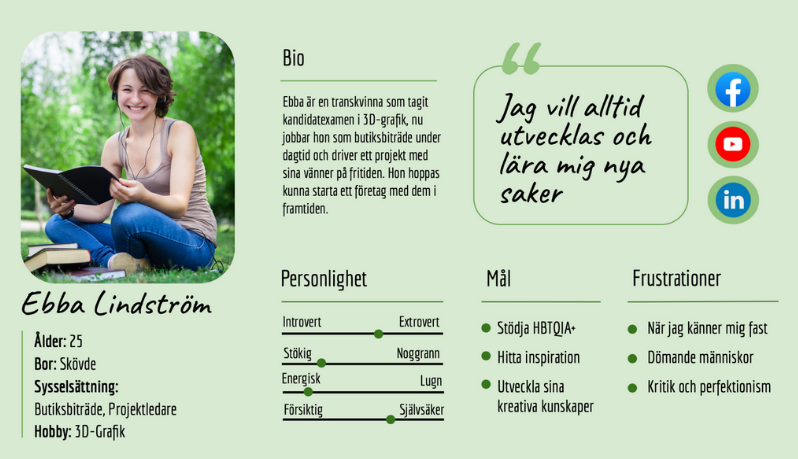
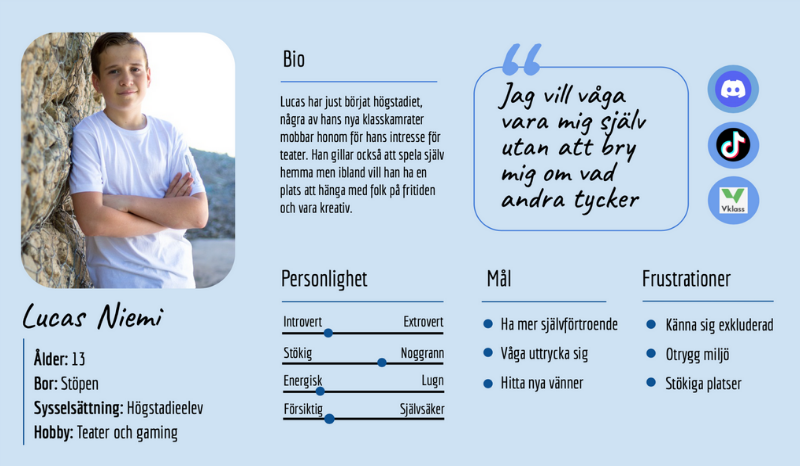
Customer Journey Map
The Customer Journey Map was created to map how the organization is perceived today – called the current state. After both a user research and meetings with the client we were able to identify some solution aspects for the project.
Current state

Future state
The future state of the organization was then mapped out. The highlighted aspects below show whats new. For example, we had ideas for more trendy communication channels to make Kulturlabbet more relevant.
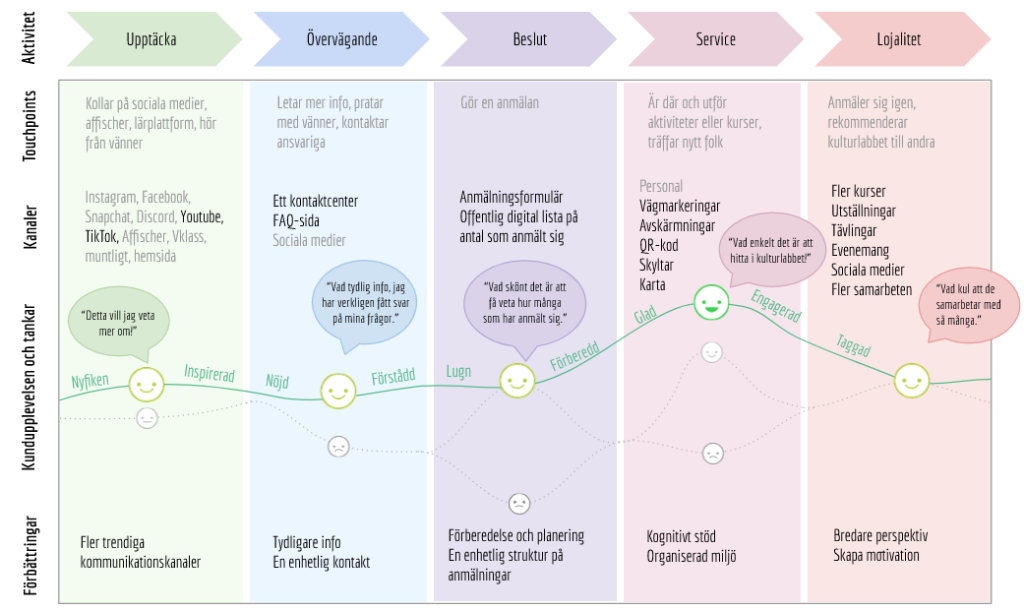
Business Model Canvas
The Business Model Canvas is a strategic management tool to quickly be able to define and communicate a business idea or concept. We did as previously and mapped out the current state of the organization. Later we created a future state of BMC (Business Model Canvas) whereas you will find the green notes to be the new ideas implemented.
Current state

Future state
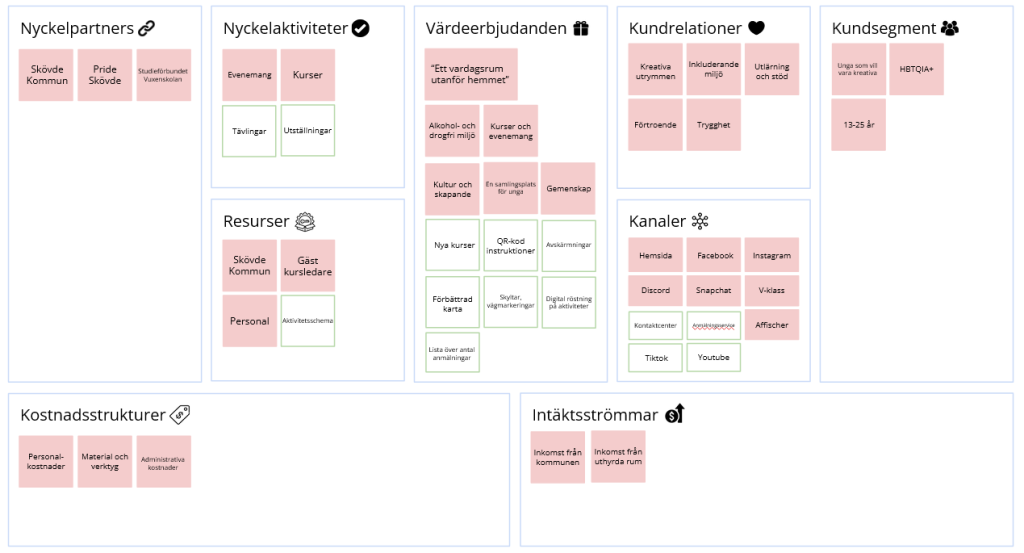
Service Blueprint
A Service Blueprint was created and based on the future states of our customer journey map, and should also illustrate all individual aspects of the service. It shows all the links between all aspects of the service, both the visible and invisible aspects that happen in the background of the service.
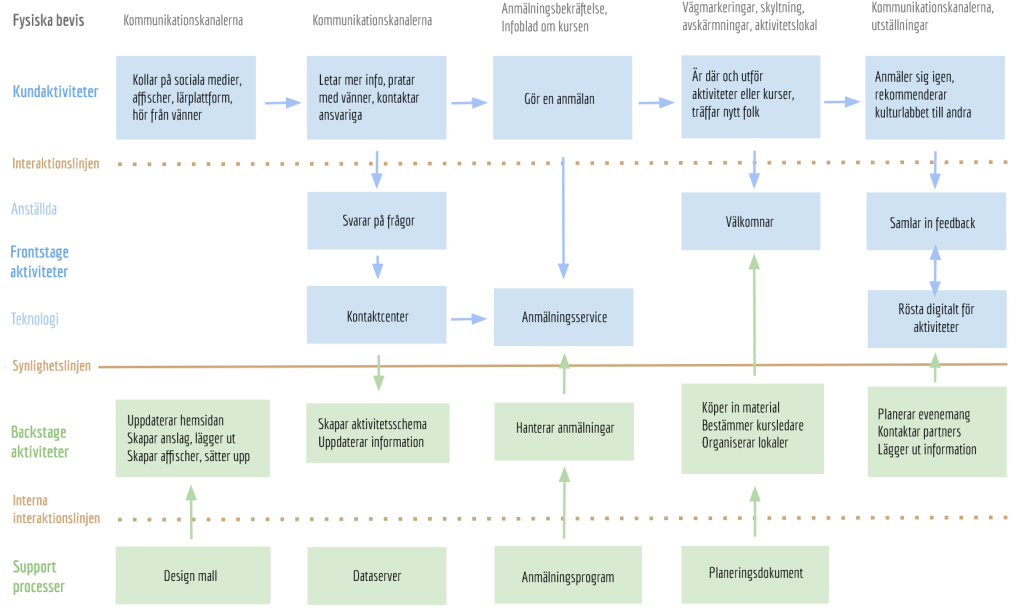
Design artefacts to communicate the ideas
Besides creating a Customer Journey Map, Service Blue Print and Business Model Canvas other design artefacts were created to communicate our ideas to the stakeholders. Each person in the group created one artefact of their choosing.
Storyboard
I decided to create a storyboard (the first storyboard below), the motivation behind it was to practice on artefacts I found harder to create. I always want to improve and become better in communicating my ideas.
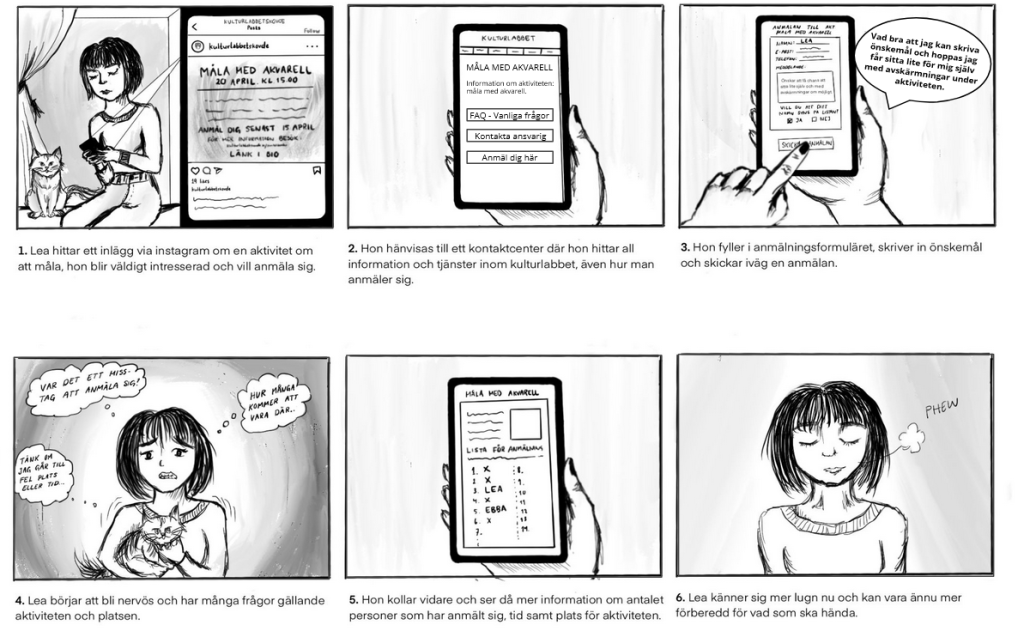
Idea 1: A need for clear information & contact
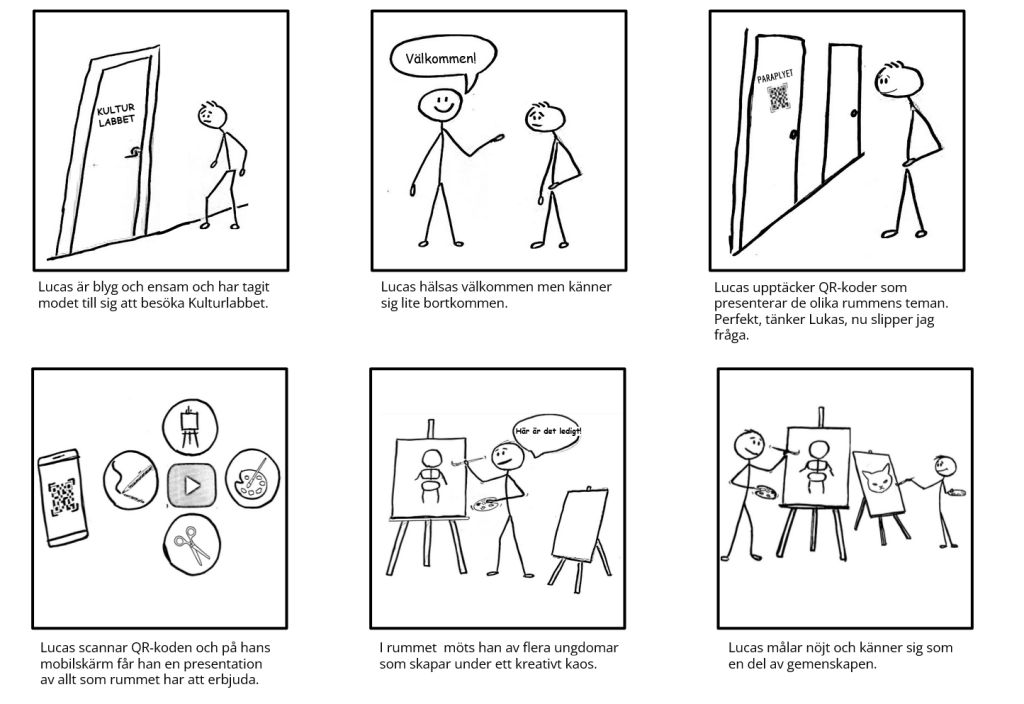
Idea 2: QR-code for clarity about activities
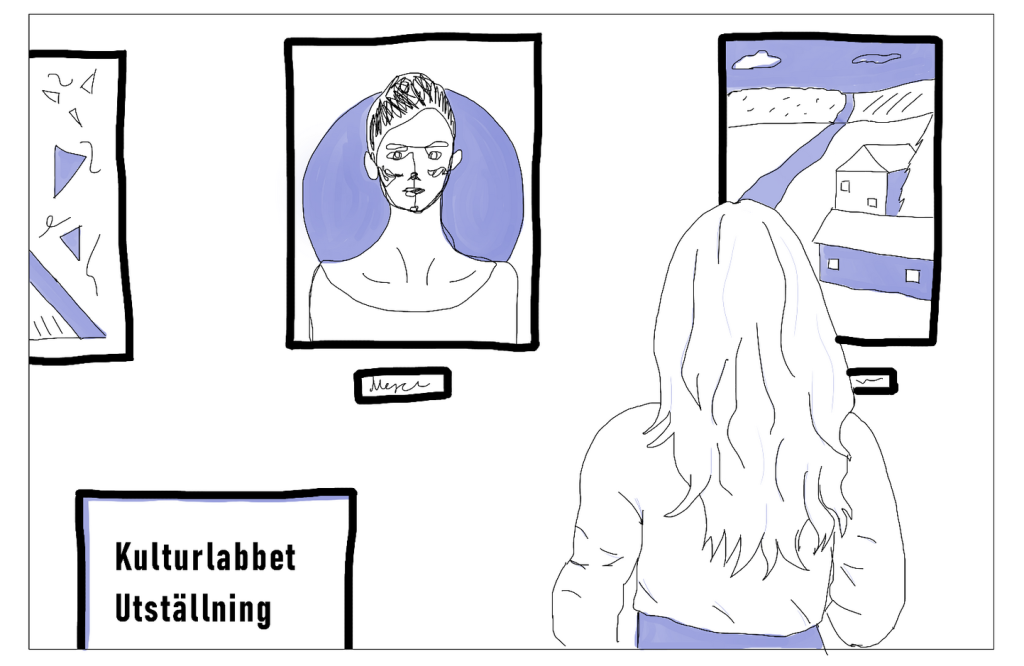
Idea 4: Hold art exhibitions for younger people to show their own works
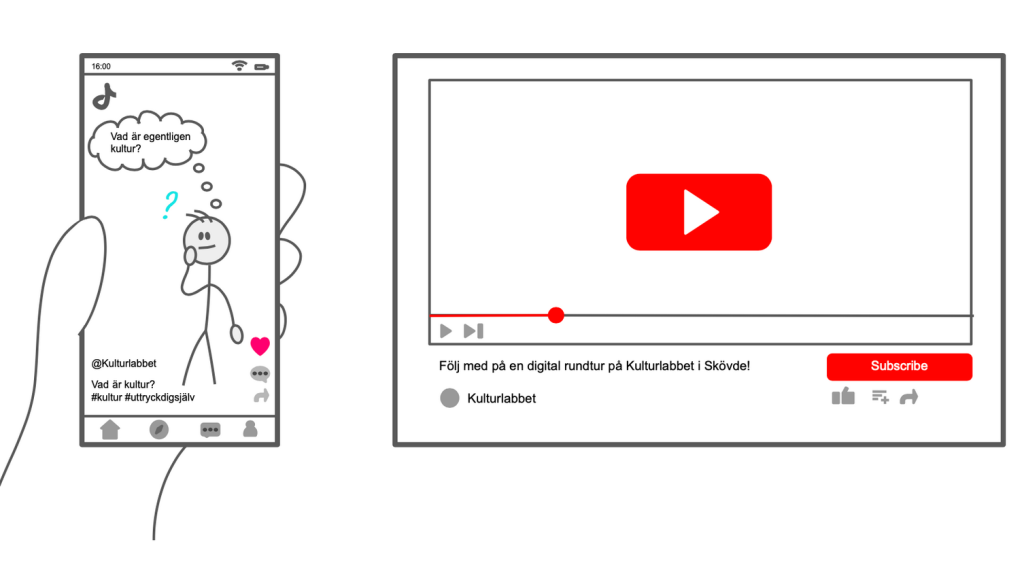
Idea 3: Use other social media platforms to promote & show what there is to do
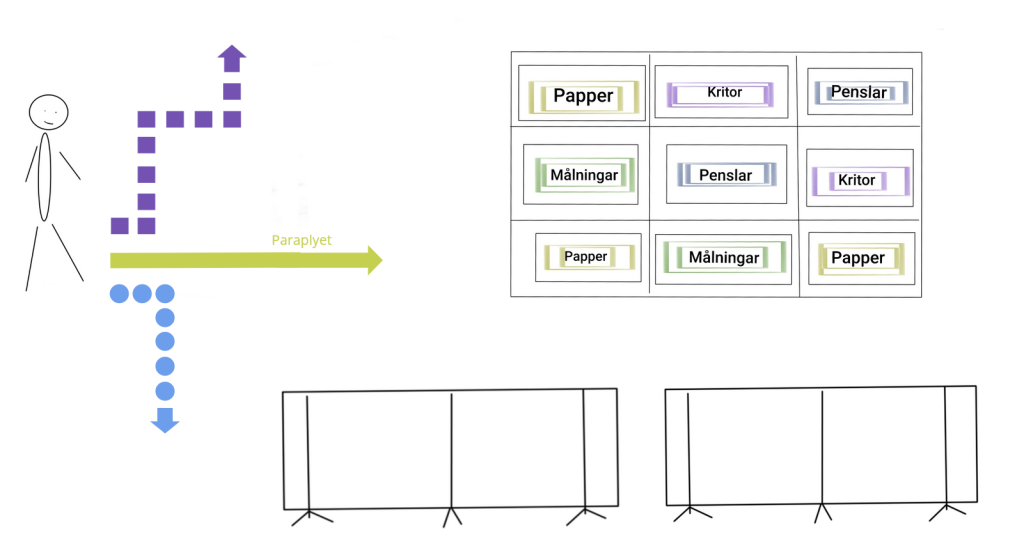
Idea 5: Organized place, clear pathways for the user to know where to go
Reflection
This project was something really new and challenging, but also very familiar. I think that UX design and Service design have somewhat similar techniques and design thinking. Since this was a bigger work group it was also harder to get everyone to do their part and keep the motivation going. We still kept going strong and we managed to solve it by dividing the workload as each individual preferred to do.
This project helped me grow and expand my knowledge, it also made me realize that the user experience does not solely base on the product but also the whole service of it, and environment.